When I began making cheese, one of the first types that I made happened to also be one of my absolute favorites…..Feta. It is usually made from either goat or cow milk (goat milk feta is my favorite although I do eat both), and if you have never experienced it has a wonderful salty tang to it. There are a number of recipes out there for making feta, however the one being presented here is a pretty easy one, using rennet tablets (which may be easier for many first time cheese makers to find). Be aware, however, as easy as this recipe is, it will still take a couple days to complete your feta and a few more days for brining.
Homemade Feta is Always Bettah!
Ingredients:
- 1 gallon milk- whole is best but may use skim or 2%
- 1T active, live, plain yogurt. Organic if possible but not necessary
- ½ of a rennet tablet
- 5T salt for the brine
Directions:
To begin the cheese, you will need a gallon of milk, either cow or goat. Fresh is best but store bought may be used as long as it is not ultra pasteurized. Heat to 86 degrees F then remove from heat. Do not let the milk stick and burn to the bottom of the pan.
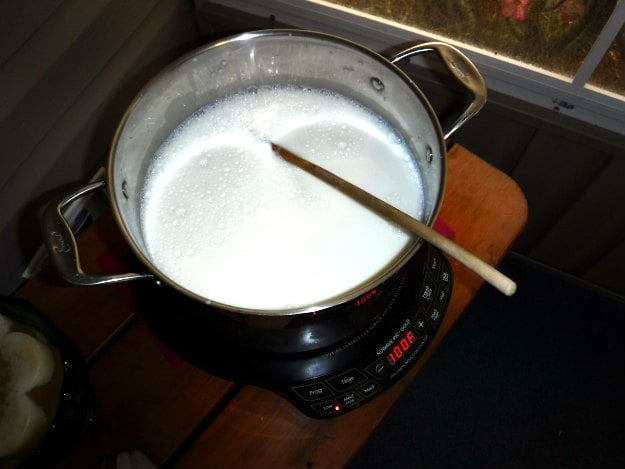
At this point, add 1T live active, plain yogurt. This will act as a inoculate. To be sure that the yogurt thoroughly mixes into the warm milk, it may be combined in a cup with 1T of the warm milk, mixed thoroughly until the yogurt “disappears”, then add to the pot of milk and stir. Cover and let sit for 1 hour at room temperature.
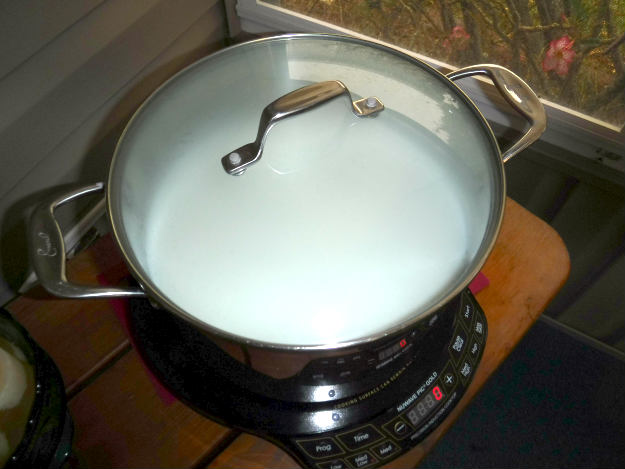
After the warm, inoculated milk has sat for 1 hour, dissolve ½ of a rennet tablet in ¼ cup water, allowing the tablet to dissolve. (This part may also be done during the hour that the milk is sitting.) Add the rennet mixture to the milk, stir well, cover and allow to sit, undisturbed at room temperature, overnight.
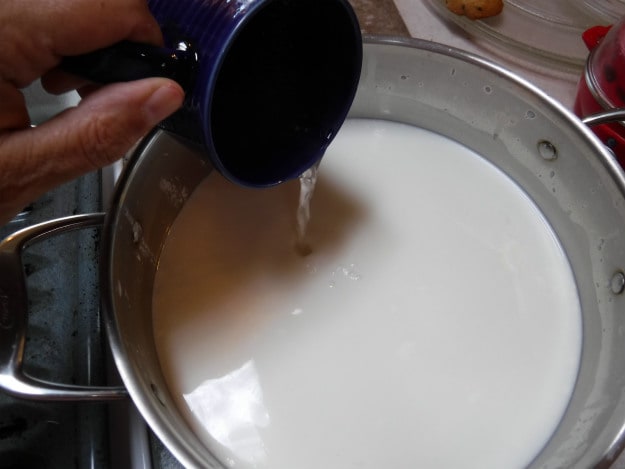
The Next Morning:
The milk mixture should have gelled to where if a finger tip is poked in, you see a clean break. With a long knife, cut the curd into small, ½' sized pieces. Next, gently lift and stir the curds, reaching to the bottom of the pot and cutting any down to size that are still too large. This stirring should be done, not with a spoon, but with your impeccably clean hand/arm. Stir gently for about 10 minutes.
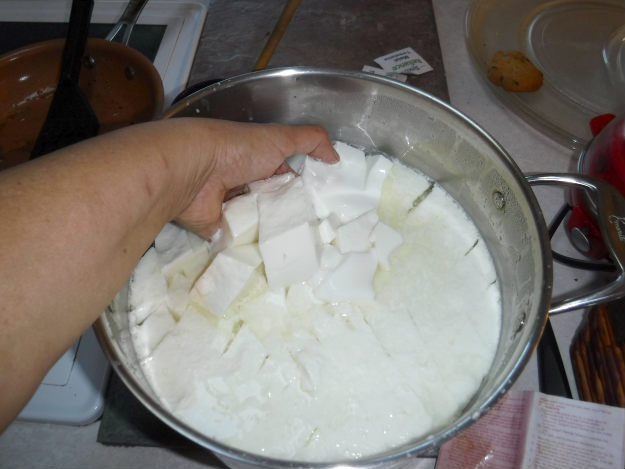
Place a large strainer over a large bowl (so that the whey can be saves and repurposed!). Line the strainer with either clean and sterile muslin towels, hankies or a very tight weave cheesecloth. (The towel or hankies usually work best. I keep some just for cheese making.) Carefully and gently begin pouring the whey into the strainer. Pour off as much as possible before you begin to allow the curds to empty into the strainer. Allow the curd to sit in the strainer and drain, at least a few hours or until no more whey is draining.
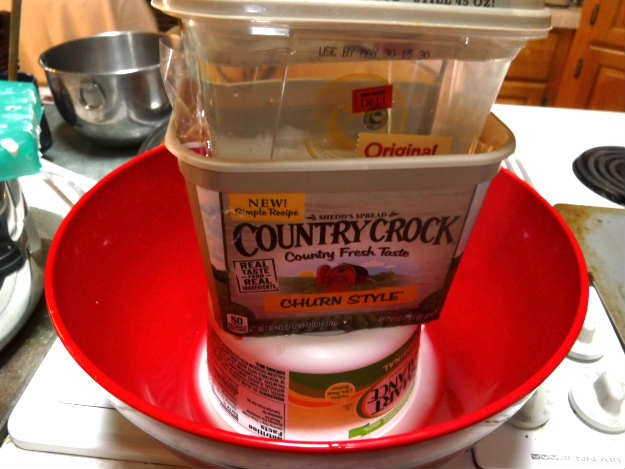
Once the curds have drained, transfer into a clean bowl break into smaller pieces and add salt. (Sea salt is my choice.) Place the curds into a lined cheese mold (towel, hankies or cheesecloth). Once the mold is full, cover with the ends of the fabric lining the mold and press. Leave overnight. Now, for this step, a real cheese press is helpful, however molds and a pressing method may be rigged up (as in photos). Remember to punch some holes into the bottom of the “mold” to allow the whey to escape as the cheese is being pressed. Adjust weight accordingly during the pressing process.
Day Three:
Remove the pressed cheese from the mold and unwrap. At this point, depending on how large of a chunk of feta that you end up with, you can leave it in a chunk, slice it or cut into pieces about 1 ½ “.
Now, to obtain the classic salty feta taste, a brine is necessary. In a wide mouth glass or plastic container, mix 5T of salt (I prefer sea salt) into 20oz of water. When the salt is totally dissolved, carefully place the feta into the brine. Let the cheese sit in the brine for at least a few days before removing it from the brine (brine may be discarded) and storing in airtight container. Keep unused portions refrigerated.
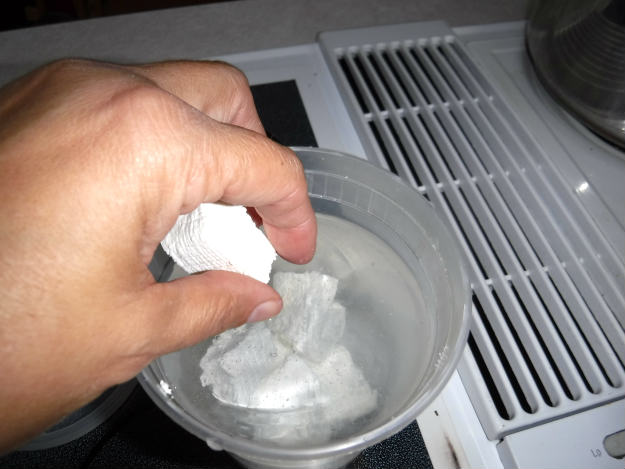
One thing that I love to do with the fresh feta, is to loosely place it in a jar with homemade sun dried tomatoes, fresh basil and black olives. Pour olive oil or an olive oil blend over the mix until covered. Replace lid and store in the refrigerator. A tasty snack and delicious in a salad or on a relish tray.
Up Next: Gravity Fed Water Systems: A Simple Overview
Will you give homemade feat a try? Let us know how it turned out in the comment section below!

I made the feta this week. It tirned out great! The salt was way too much. I wonder if it shoyld be 5 teaspoons instead of table spoons??? I ended up having to rinse and soak it, then drain it again, to be able to eat it. It turned out fine, just the consistency was little crumbles due to the rinse and soak. Truly delicious, though! Thanks so much for sharing the recipe!